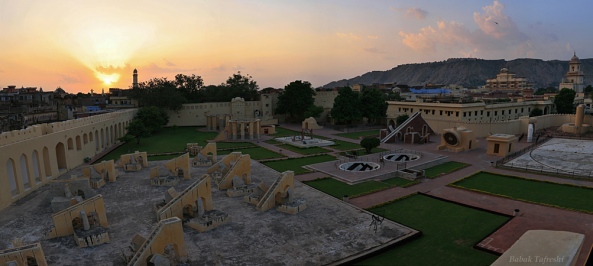
The sun sets over the historic observatory of Jantar Mantar in Jaipur, India. The architectural astronomical instruments are built by Maharaja Jai Singh II at his then new capital of Jaipur between 1727 and 1734. He had constructed a total of five such observatories at different locations, including Delhi, while the Jaipur observatory is the largest of all and one of the biggest stone observatories in the world. Jantar Mantar means literally ‘calculation instrument’. The instruments are in most cases huge structures. They are built on a large scale so that accuracy of readings can be obtained. The observatory consists of fourteen major geometric devices for measuring time, predicting eclipses, tracking stars in their orbits, ascertaining the declinations of planets, and determining the celestial altitudes and related ephemerides. Babak Tafreshi/Dreamview.net
The Hindu cosmology and its timeline is the closest to modern scientific timelines and even more, which might indicate that the Big Bang is not the beginning of everything but just the start of the present cycle preceded by an infinite number of universes and to be followed by another infinite number of universes. It also includes an infinite number of universes at one given time.
The Rig Veda questions the origin of the cosmos:
“Neither being (sat) nor non-being was as yet. What was concealed? And where? And in whose protection?…Who really knows? Who can declare it? Whence was it born, and whence came this creation? The devas were born later than this world’s creation, so who knows from where it came into existence? None can know from where creation has arisen, and whether he has or has not produced it. He who surveys it in the highest heavens, he alone knows-or perhaps does not know.” (Rig Veda 10. 129)